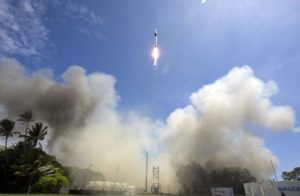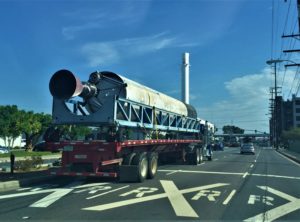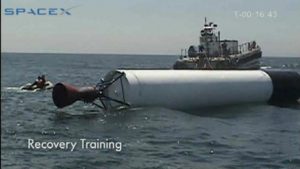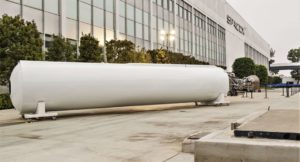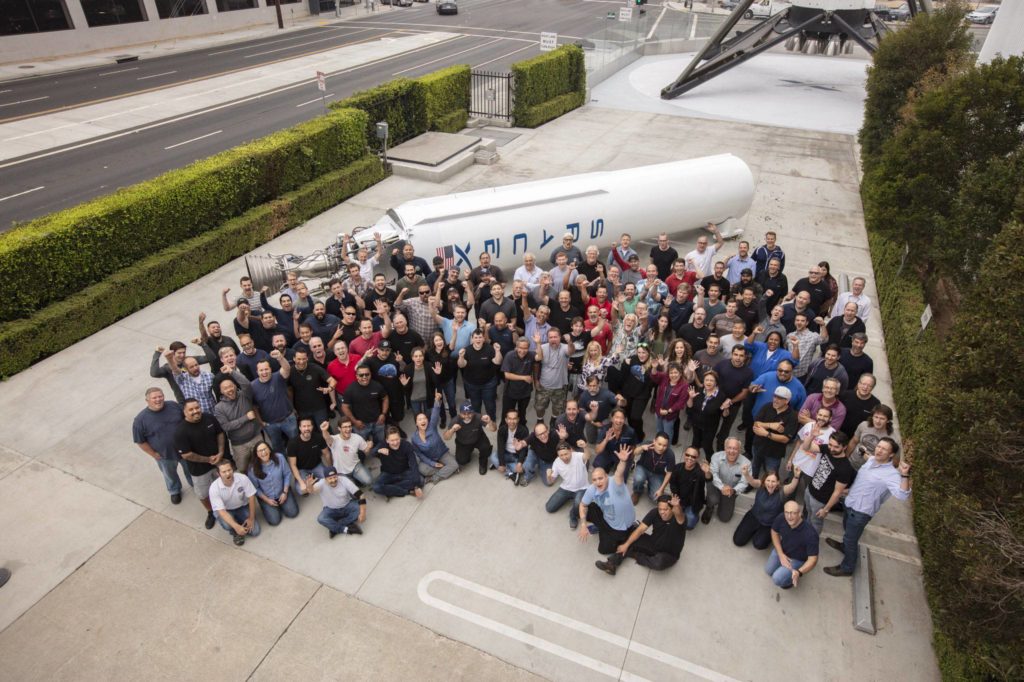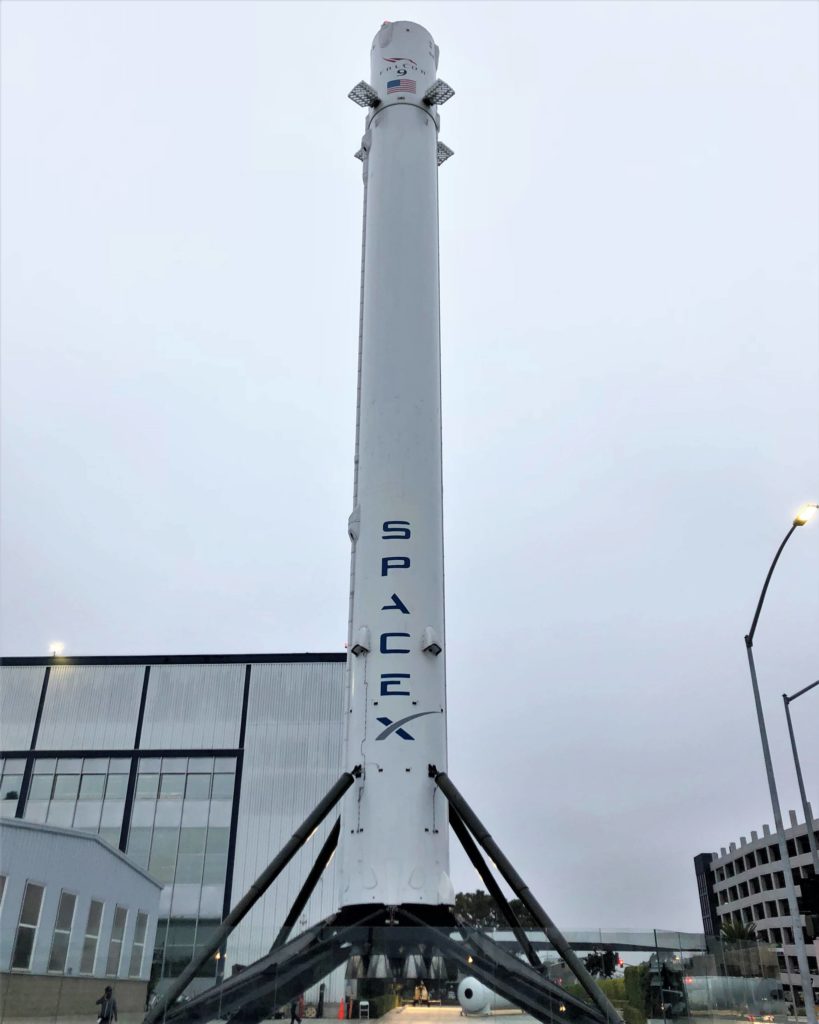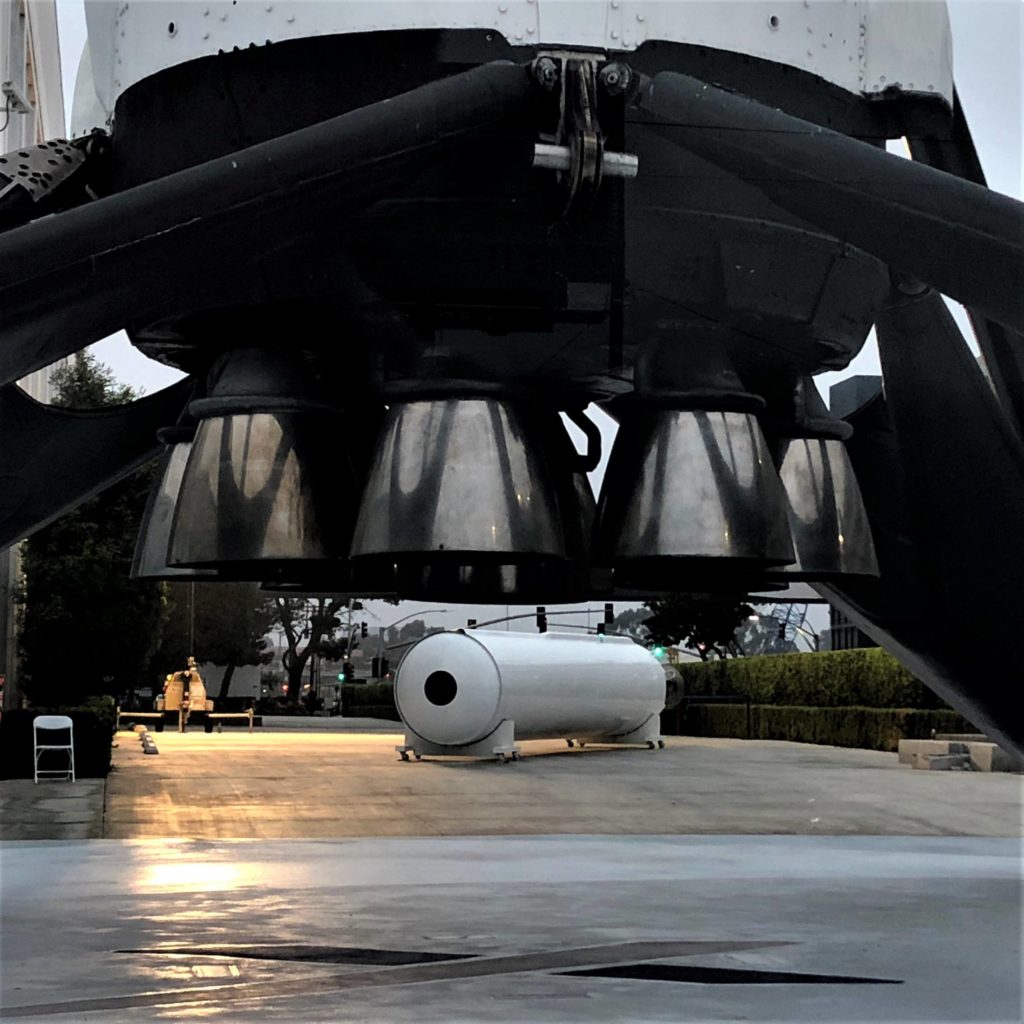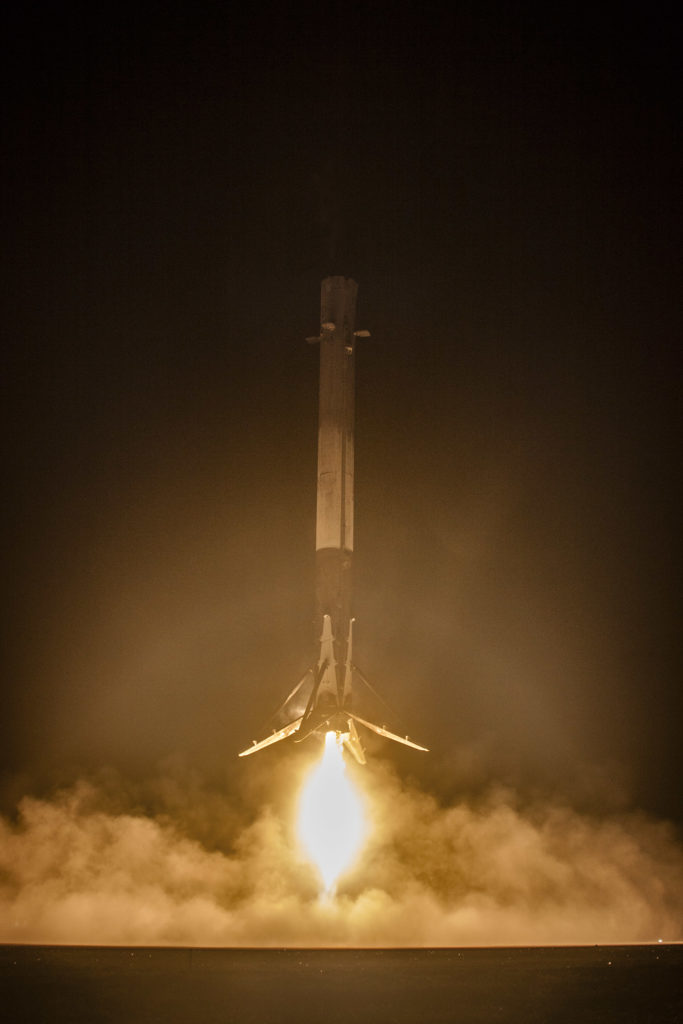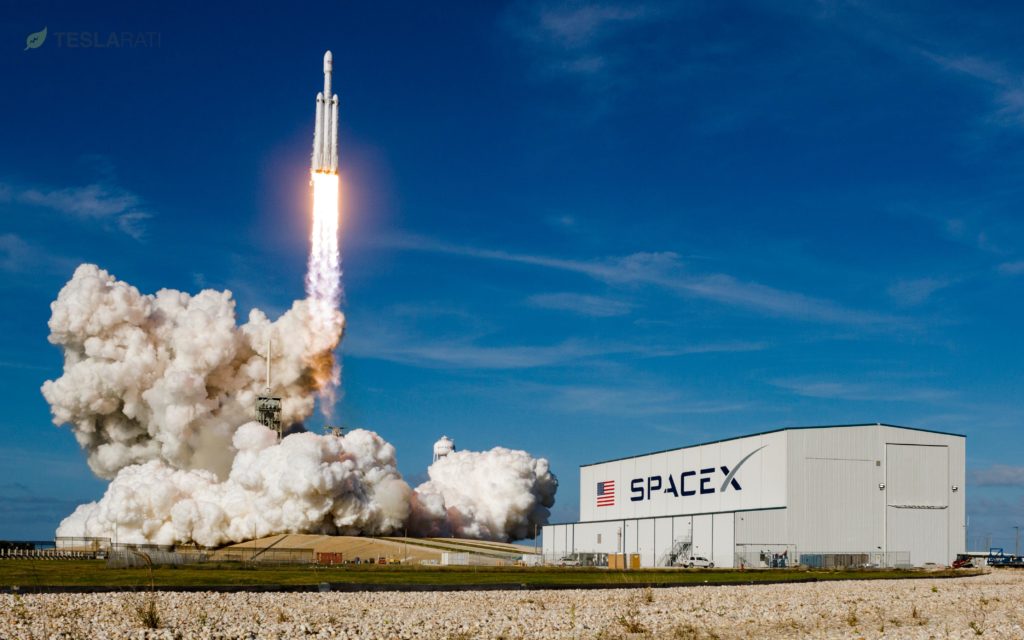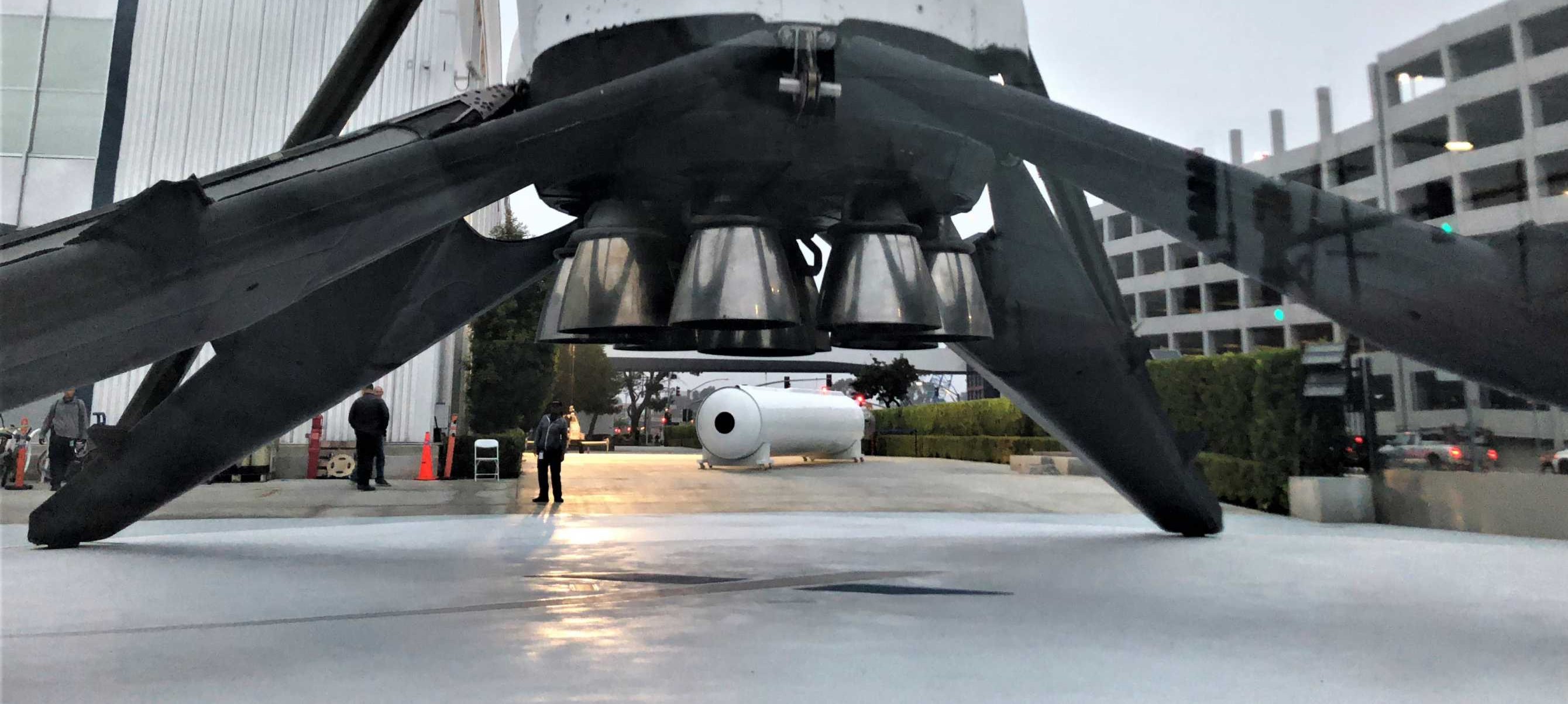

News
SpaceX restores a Falcon 1 rocket for 10th anniversary of first launch success
With plans to give the historic rocket its own place on display inside the company’s Hawthorne factory, SpaceX has refurbished the last remaining Falcon 1 rocket booster and an old Merlin 1C engine to create a model representative of the same Falcon 1 that saved SpaceX and made history on September 28th, 2008, becoming the first privately-developed liquid-fuel rocket to reach Earth orbit.
In the process of celebrating the tenth anniversary of that crowning achievement, one is reminded just how meteoric SpaceX’s rise has been over the course of that decade, marked by relentless progress with Falcon 1, Falcon 9, Falcon Heavy, Cargo Dragon, Crew Dragon, and even the early phases of BFR construction.
https://twitter.com/SpaceXJobs/status/1045832573471969281
On that September afternoon ten years ago, SpaceX may well have saved itself from extinction. Running on funding fumes, CEO and founder Elon Musk has long held that the company would have been forced to effectively cease activity and disband after six years of work and three consecutive Falcon 1 failures had drained almost all of the $100 million he had dedicated in 2002.
Reaching orbit is undoubtedly one of the most technologically challenging feats there is and SpaceX’s merciless failures drove that reality home, ranging from a burst propellant line on the first stage Merlin, liquid propellant sloshing problems on the second stage, and overperformance on the first stage engine causing the two stages to impact after separation, among myriad other problems faced outside of actual launch attempts. Thankfully, thanks to the extraordinary group of several hundred early employees that fixed those problems and pushed onwards, Falcon 1’s fourth attempt was almost flawless and successfully placed a boilerplate mass simulator into a roughly circular ~650km orbit.
- Falcon 1 Flight 4 seen shortly after liftoff from SpaceX’s Kwaj Atoll island pad. (SpaceX)
- Earlier this summer, /r/SpaceX member MarsOrBust101 was lucky enough to spot an old Falcon 1 – long sat at one of SpaceX’s several junkyards – being transferred to its Hawthorne factory. (Reddit /u/MarsOrBust101)
- It’s impossible to know for sure, but that hardware was almost certainly SpaceX’s first Falcon 1 recovery test article in a previous life. (SpaceX)
- SpaceX has restored the last remaining Falcon 1 structures into a display model. The small, unassuming rocket was showcased in front of the company’s Hawthorne factory on September 28th. (Pauline Acalin)
A bit more than nine months later, SpaceX completed the first and last operational launch of Falcon 1, retired to allow the company to focus fully on Falcon 5 (cancelled a few years later), Falcon 9, and Cargo Dragon. Eleven months after that July 2009 mission, SpaceX successfully launched Falcon 9 for the first time and followed it up with the first launch of a functioning Cargo Dragon spacecraft, which spent several hours testing systems in orbit before reentering Earth’s atmosphere and landing in the Pacific Ocean. Two years later in 2012, SpaceX’s Cargo Dragon became the first commercial spacecraft in history to dock with the International Space Station, with operational NASA Commercial Resupply Services launches beginning just six months after.
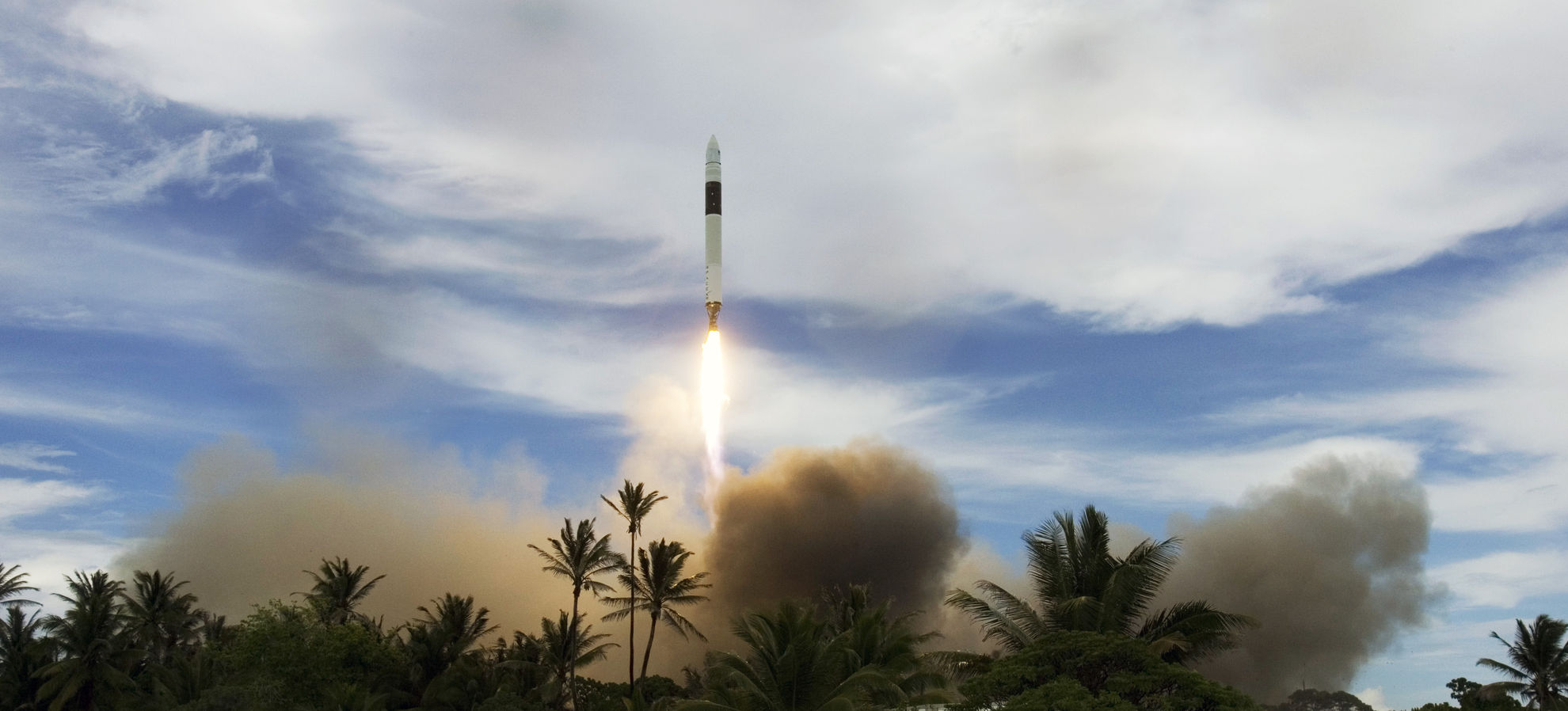
With three years and five successful launches under its belt, Falcon 9 v1.0 was retired and made way for the first of many upgraded Falcon 9 variants, known as Falcon 9 v1.1, featuring 60% greater thrust and mass at liftoff, a new octaweb layout for its nine new Merlin 1D engines, and a range of structural changes that set the stage for future attempts at booster recovery. Two and a half years after Falcon 9 v1.1’s debut and a little over five years since the first successful launch of Falcon 1, SpaceX accomplished the first successful landing of a Falcon 9’s first stage, and that booster now stands proudly outside of the company’s Hawthorne, CA headquarters.
To mark that 10th anniversary, SpaceX apparently decided to salvage a mothballed Falcon 1 stored in a junkyard, refurbishing it into something closer to its former self. Although just the first stage and a Merlin 1C engine were present, the company stationed the refurbished Falcon 1 in front the first recovered Falcon 9 booster and gave all employees an opportunity to see the duo over the course of September 28th.
- Roughly a third of the SpaceX employees present for the company’s Falcon 1 Flight 4 success still remain. (SpaceX)
- Falcon 9 and Falcon 1. (Pauline Acalin)
- SpaceX’s first successful Falcon 9 landing. Booster B1019 now stands in front of SpaceX’s Hawthorne factory. (SpaceX)
- Falcon Heavy successfully clears the tower after its maiden launch, February 6, 2018. (Tom Cross)
The sheer size differential is undeniably impressive. However, a more gobsmacking statistic can be found still. Falcon 1 stands roughly 22 meters tall and would weigh around 39,000 kilograms with a full load of liquid oxygen and kerosene. While the Falcon family’s current payload fairing isn’t nearly tall enough to squeeze in a full Falcon 1 first stage, Falcon Heavy could easily place a fully-loaded Falcon 1 into Low Earth Orbit and still recovery all three of its first stage boosters.
In other words, SpaceX went from launching the first commercial liquid-fuel rocket to reach orbit to launching a super-heavy rocket that could put that entire first rocket into orbit in less than ten years. Not too shabby.
For prompt updates, on-the-ground perspectives, and unique glimpses of SpaceX’s rocket recovery fleet check out our brand new LaunchPad and LandingZone newsletters!
News
SpaceX’s Crew-11 mission targets July 31 launch amid tight ISS schedule
The flight will lift off from Launch Complex 39A at Kennedy Space Center in Florida.
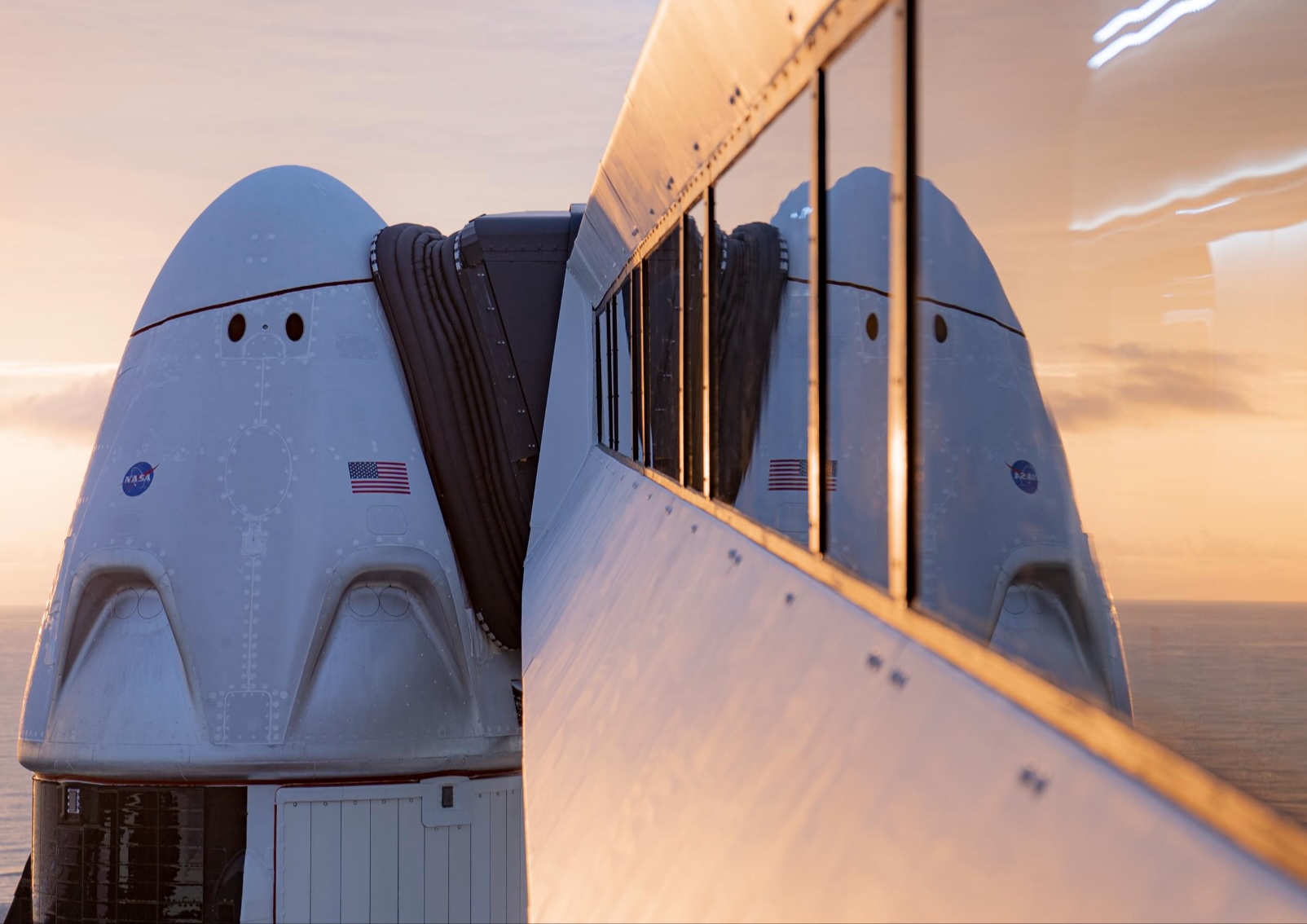
NASA and SpaceX are targeting July 31 for the launch of Crew-11, the next crewed mission to the International Space Station (ISS). The flight will lift off from Launch Complex 39A at Kennedy Space Center in Florida, using the Crew Dragon Endeavour and a Falcon 9 booster.
Crew Dragon Endeavour returns
Crew-11 will be the sixth flight for Endeavour, making it SpaceX’s most experienced crew vehicle to date. According to SpaceX’s director of Dragon mission management, Sarah Walker, Endeavour has already carried 18 astronauts representing eight countries since its first mission with NASA’s Bob Behnken and Doug Hurley in 2020, as noted in an MSN report.
“This Dragon spacecraft has successfully flown 18 crew members representing eight countries to space already, starting with (NASA astronauts) Bob (Behnken) and Doug (Hurley) in 2020, when it returned human spaceflight capabilities to the United States for the first time since the shuttle retired in July of 2011,” Walker said.
For this mission, Endeavour will debut SpaceX’s upgraded drogue 3.1 parachutes, designed to further enhance reentry safety. The parachutes are part of SpaceX’s ongoing improvements to its human-rated spacecraft, and Crew-11 will serve as their first operational test.
The Falcon 9 booster supporting this launch is core B1094, which has launched in two previous Starlink missions, as well as the private Ax-4 mission on June 25, as noted in a Space.com report.
The four-members of Crew-11 are NASA astronauts Zena Cardman and Mike Fincke, as well as Japan’s Kimiya Yui and Russia’s Oleg Platonov.
Tight launch timing
Crew-11 is slated to arrive at the ISS just as NASA coordinates a sequence of missions, including the departure of Crew-10 and the arrival of SpaceX’s CRS-33 mission. NASA’s Bill Spetch emphasized the need for careful planning amid limited launch resources, noting the importance of maintaining station altitude and resupply cadence.
“Providing multiple methods for us to maintain the station altitude is critically important as we continue to operate and get the most use out of our limited launch resources that we do have. We’re really looking forward to demonstrating that capability with (CRS-33) showing up after we get through the Crew-11 and Crew-10 handover,” Spetch stated.
Lifestyle
EV fans urge Tesla to acquire Unplugged Performance for edge in fleet and security industry
Unplugged Performance has built a name for itself by producing performance upgrades for Tesla vehicles.
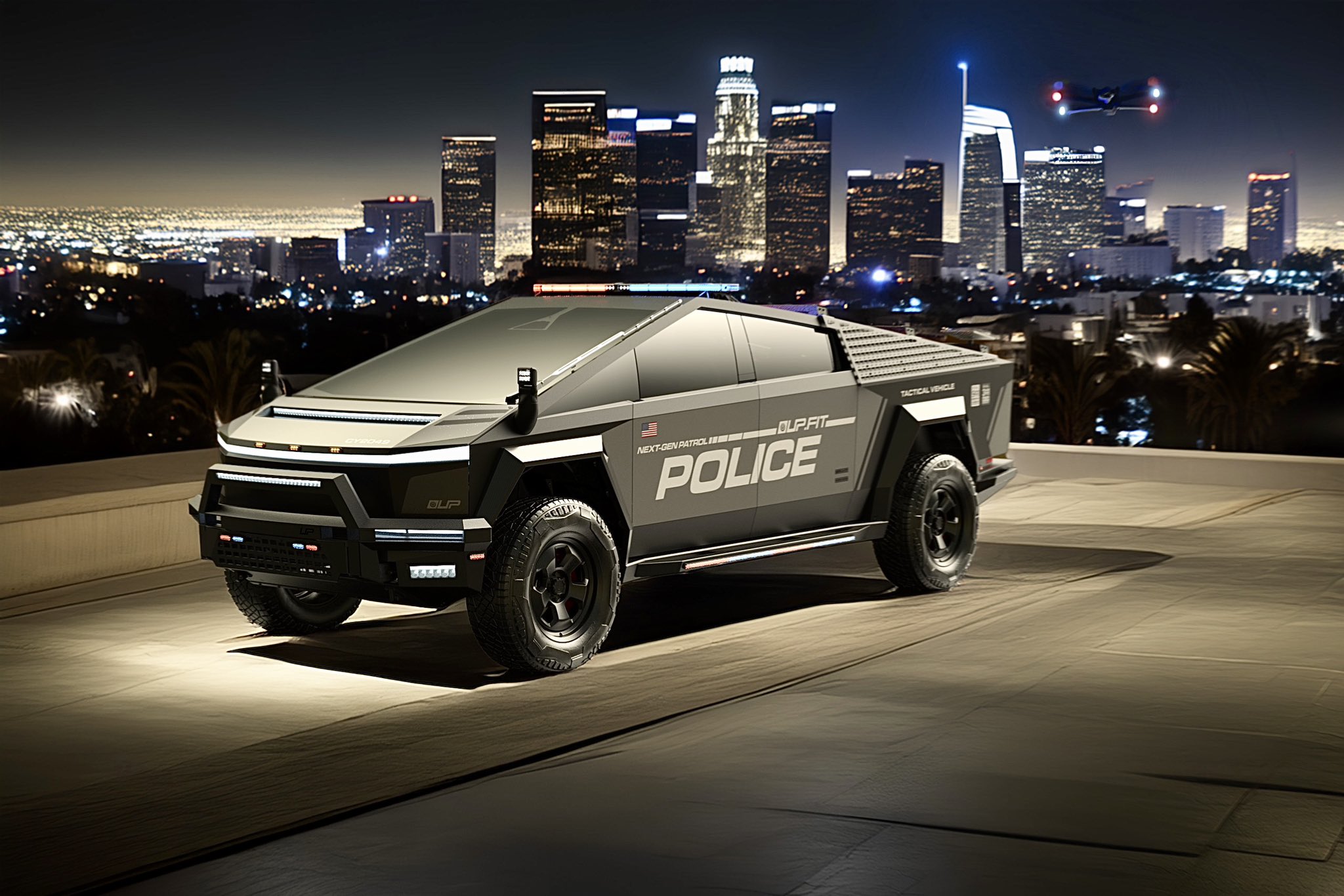
A growing number of Tesla enthusiasts and longtime community voices are calling on the electric vehicle maker to acquire Unplugged Performance, a California-based aftermarket company best known for tuning Tesla vehicles and developing specialized government fleet solutions under its UP.FIT division.
The idea was once considered a niche proposal among EV fans, but it is now gaining serious attention not just as a performance play but as a strategic move to deepen Tesla’s roots in the fleet and security industry.
A strategic fit
Unplugged Performance has built a name for itself by producing performance upgrades for Tesla vehicles, from track-optimized components to visual and aerodynamic upgrades. But in recent years, its UP.FIT division has pivoted toward a more functional future by outfitting Tesla vehicles like Model Ys for police, military, and government use.
That work has sparked growing calls for closer collaboration with Tesla, especially as the EV maker increasingly leans into autonomy, AI, and fleet services as core components of its next chapter.
“I posted this four years ago, but I think it’s more true now than ever,” wrote Whole Mars Catalog, a well-known Tesla investor and FSD Beta tester, on X. “Tesla should buy Unplugged. But not just as a Performance division. What they are doing with UP.FIT unlocks large government and commercial fleet purchases that can improve utilization.”
Tesla fans such as shareholder Sawyer Merritt echoed the sentiment, calling Unplugged a “great fit within Tesla.” adding, “They are literally located directly next to Tesla’s design studio in Hawthorne.”
Enabling the next wave
Supporters of the idea noted that integrating Unplugged into Tesla’s corporate structure could help accelerate the adoption of autonomous technologies in government sectors. With UP.FIT patrol cars already in use across some U.S. police departments, Tesla fans envisioned a future where self-driving Teslas could potentially revolutionize law enforcement, search-and-rescue, and public service logistics.
“Just imagine how autonomous patrol cars could transform policing and bring us into a safer future,” the veteran FSD tester wrote.
The benefits could also extend to Tesla’s existing consumer base. “They also have some incredible products in the works that I think will appeal to many ordinary Tesla drivers — not just those looking for performance or mods. Stuff that’s so good it should have come straight from the design studio next door,” Whole Mars Catalog noted.
Unplugged Performance, founded in 2013, shares not just a product vision with Tesla, but also geography. Its Hawthorne headquarters sits directly adjacent to Tesla’s design studio, and the two companies have maintained a close working relationship over the years. The aftermarket firm has long positioned itself as a “mission-aligned” partner to Tesla.
In response to the recent calls for acquisition, Unplugged Performance acknowledged the support from the community. “Our very existence is to support the Tesla mission with @UpfitTesla and @UnpluggedTesla,” Unplugged CEO Ben Schaffer posted on X. “We love working with Tesla and are grateful for the community’s support since 2013!”
News
Tesla debuts hands-free Grok AI with update 2025.26: What you need to know
All new Tesla vehicles delivered on or after July 12, 2025, will include Grok AI out of the box

Tesla has begun rolling out Grok, an in-car conversational AI assistant developed by xAI, to eligible vehicles starting July 12. The feature marks the most direct integration yet between Elon Musk’s artificial intelligence startup and Tesla’s consumer product lineup, offering drivers hands-free access to a chat-style companion while on the road.
Grok comes pre-installed on new vehicles
According to Tesla’s FAQ page for the feature, all new vehicles delivered on or after July 12, 2025, will include Grok AI out of the box. Owners of older vehicles may gain access through an over-the-air update, provided their vehicle meets a few hardware and software requirements.
Specifically, Grok is currently only supported on Tesla models equipped with an AMD infotainment processor and running vehicle software version 2025.26 and higher. Compatible models include the Model S, Model 3, Model X, Model Y, and Cybertruck. A Premium Connectivity subscription or active Wi-Fi connection is also required.
Tesla notes that additional vehicle compatibility may arrive in future software updates.
Grok’s features and limitations for now
Drivers can engage with Grok using the App Launcher or by pressing and holding the voice command button on the steering wheel. Grok is designed to answer questions and hold conversations using natural language, offering responses tailored to its chosen personality—ranging from “Storyteller” to the more eccentric “Unhinged.”
For fun, Tesla posted a demonstration of Grok likely running on “Unhinged” talking about what it would do to Optimus when they are on a date, much to the shock of the humanoid robot’s official social media account.
It should be noted, however, that Grok cannot currently issue commands to the vehicle itself, at least for now. Traditional voice commands for tasks like climate control, navigation, or media remain separate from Grok as of writing.
The feature is being released in Beta and does not require a Grok account or xAI subscription to activate, although that policy may change over time.
Grok privacy and in-car experience
Tesla emphasizes that interactions with Grok are securely processed by xAI and not linked to a user’s Tesla account or vehicle. Conversations remain anonymous unless a user signs into Grok separately to sync their history across devices.
Tesla has also begun promoting Grok directly on its official vehicle webpages, showcasing the feature as part of its in-car experience, further highlighting the company’s increasing focus on AI and infotainment features on its all-electric vehicles.
-

 Elon Musk2 weeks ago
Elon Musk2 weeks agoTesla investors will be shocked by Jim Cramer’s latest assessment
-

 Elon Musk3 days ago
Elon Musk3 days agoxAI launches Grok 4 with new $300/month SuperGrok Heavy subscription
-

 Elon Musk5 days ago
Elon Musk5 days agoElon Musk confirms Grok 4 launch on July 9 with livestream event
-

 News1 week ago
News1 week agoTesla Model 3 ranks as the safest new car in Europe for 2025, per Euro NCAP tests
-

 Elon Musk1 week ago
Elon Musk1 week agoxAI’s Memphis data center receives air permit despite community criticism
-

 News2 weeks ago
News2 weeks agoXiaomi CEO congratulates Tesla on first FSD delivery: “We have to continue learning!”
-

 News2 weeks ago
News2 weeks agoTesla sees explosive sales growth in UK, Spain, and Netherlands in June
-

 Elon Musk2 weeks ago
Elon Musk2 weeks agoTesla scrambles after Musk sidekick exit, CEO takes over sales

